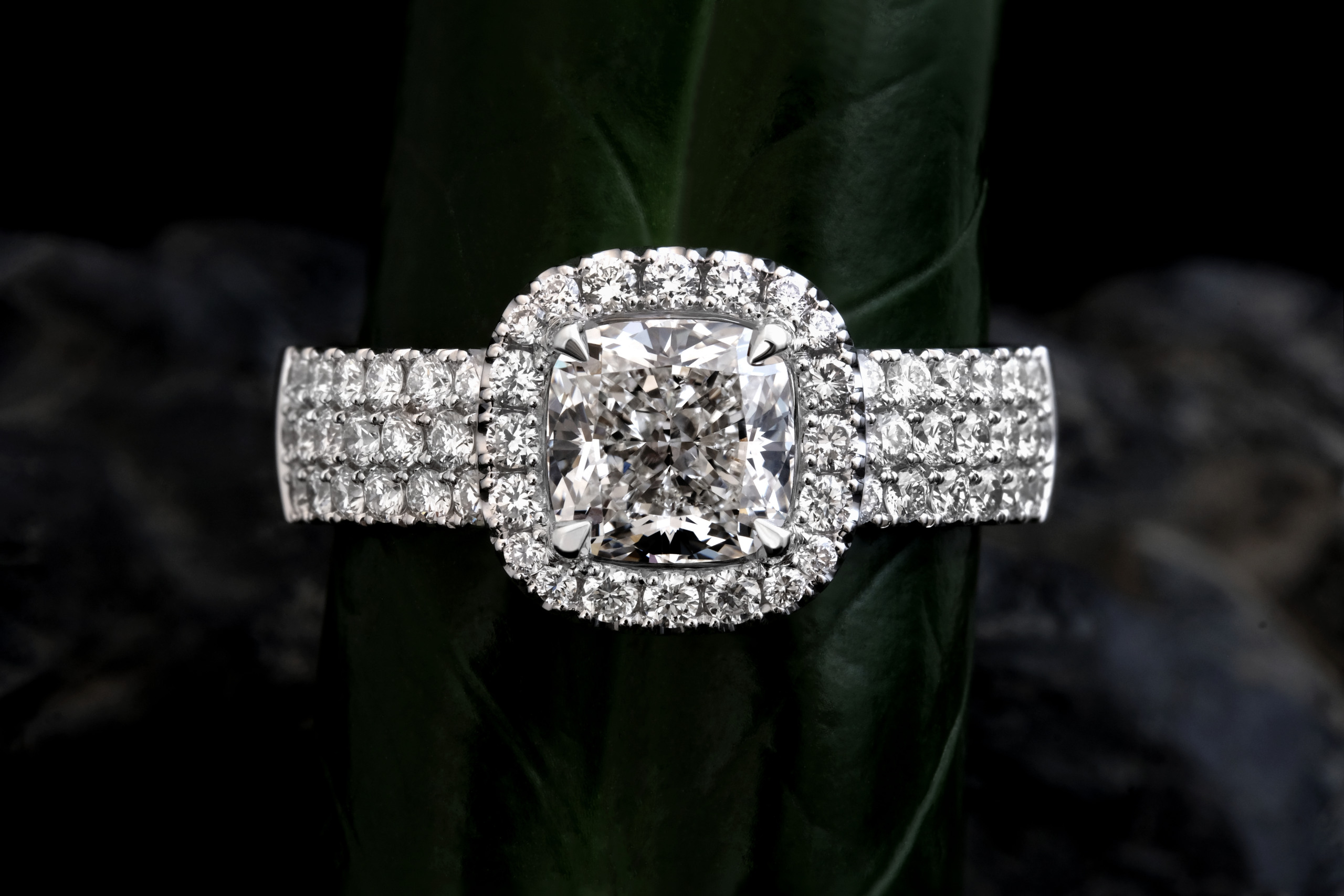
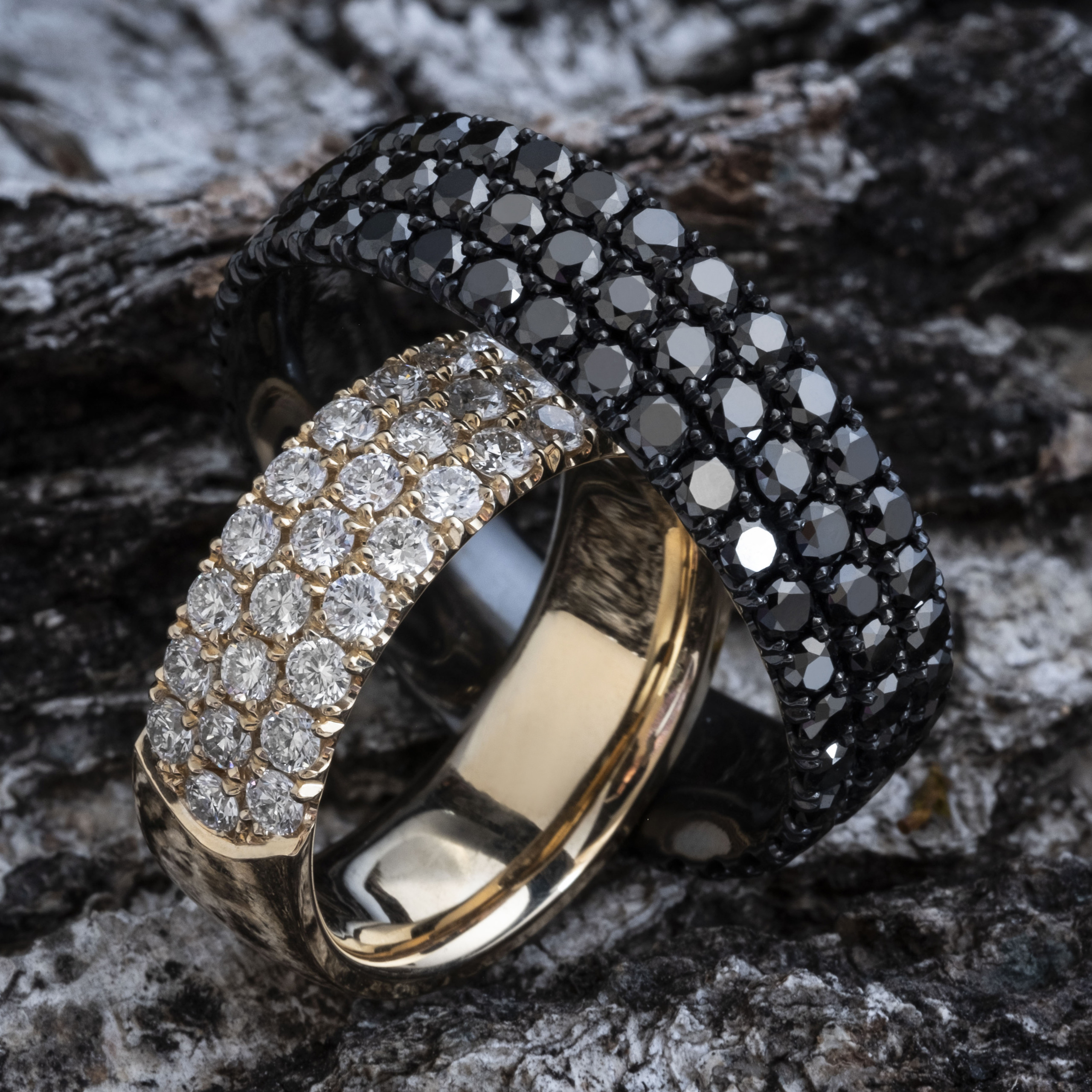
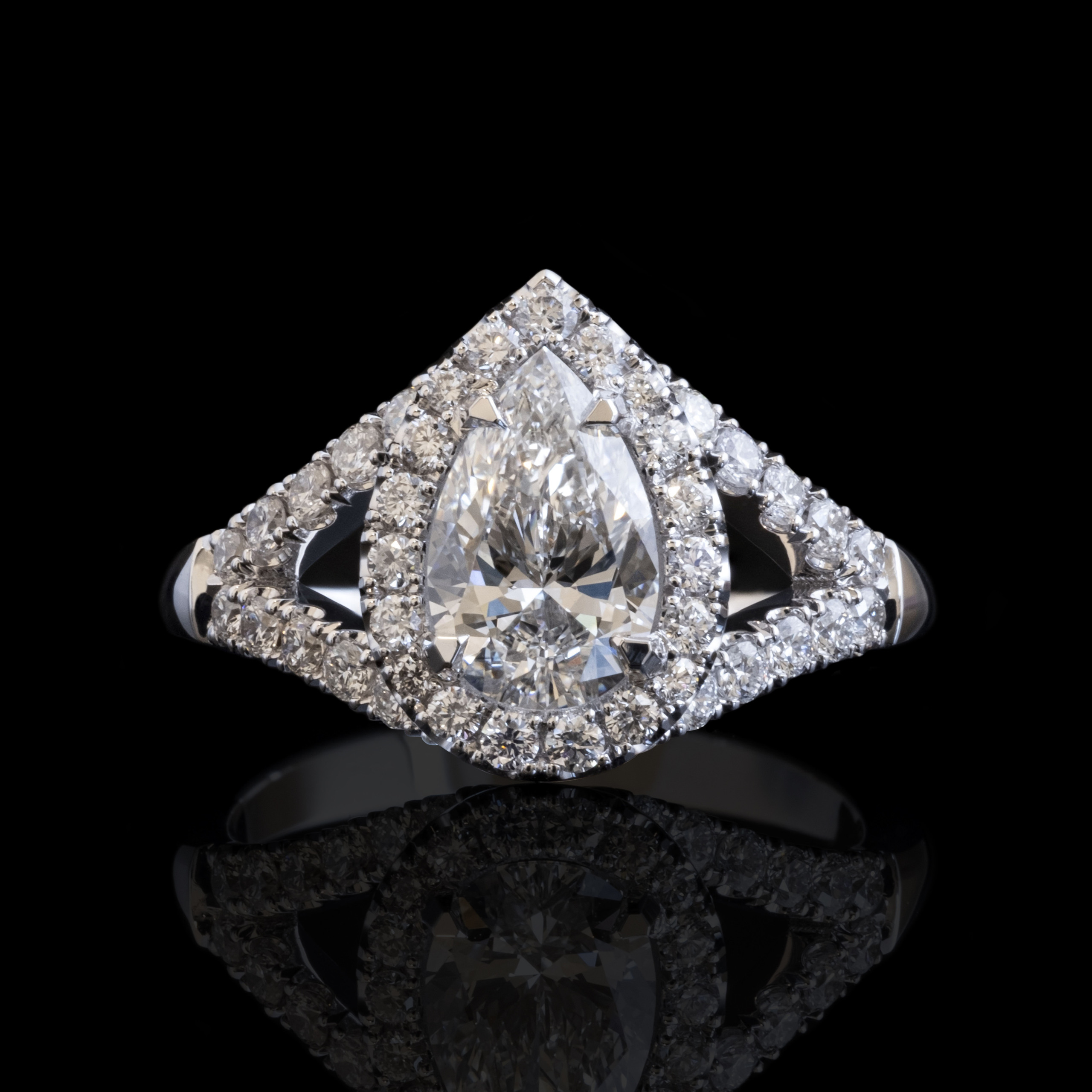
Diamonds have been the shining stars of the jewellery world for centuries. Their timeless beauty, durability, and rarity have made them one of the most desirable materials. Whether it’s an engagement ring, wedding rings, a necklace, or a striking pair of earrings – diamonds add sparkle, luxury, and elegance to any piece of jewellery.
Diamonds are considered the hardest substance in the world and are used in industries to cut, drill, and polish various materials. They are also the most durable gemstones, retaining their brilliance and resisting scratches. However, it’s important to note that diamonds are not indestructible – even the hardest stone can shatter under the wrong circumstances.
In this post, we help you better understand the world of diamonds – how to choose the right one, what to pay attention to, and which options to draw inspiration from.
Diamond Evaluation: The 4C Principle
The value and quality of a diamond are determined using the international 4C standard, which comprises four main components:
- Carat: Carat measures the weight of a diamond, not its size. One carat equals 0.2 grams. The heavier the diamond, the rarer and more expensive it is. The price of a diamond increases exponentially with carat size, as larger diamonds are significantly rarer.
- Clarity: Clarity assesses the diamond’s inclusions (internal flaws) and blemishes. The clarity scale ranges from IF (Internally Flawless) to I3 (with easily visible inclusions and imperfections). Diamonds with clarity grades of IF, VVS, or VS are high-quality diamonds with very few inclusions. Diamonds graded SI1 or SI2 may have some inclusions that are not visible to the naked eye. Those graded I1, I2, or I3 have numerous inclusions that can noticeably impact their appearance and value.
- Cut: The cut is one of the most critical aspects of a diamond, as it directly affects the stone’s brilliance and sparkle. A proper cut enhances the diamond’s beauty by reflecting light and creating the dazzling effect that makes it “come alive.” Below we will write about the most common cuts.
- Color: While diamonds often appear white, they actually come in various shades. Diamond color ranges from colorless to a noticeable yellow tint. A colorless diamond is the most valuable and rare, while yellow diamonds are generally less expensive. The GIA color scale, ranging from D (colorless) to Z (yellowish), is used to evaluate diamond color.
PS! Even rarer than colorless diamonds are natural fancy-colored diamonds, such as blue, pink, and red diamonds. These are assessed differently, using a scale of color intensity from faint to vivid. The hue itself is also important, as some tones (e.g., blue) are rarer than others.
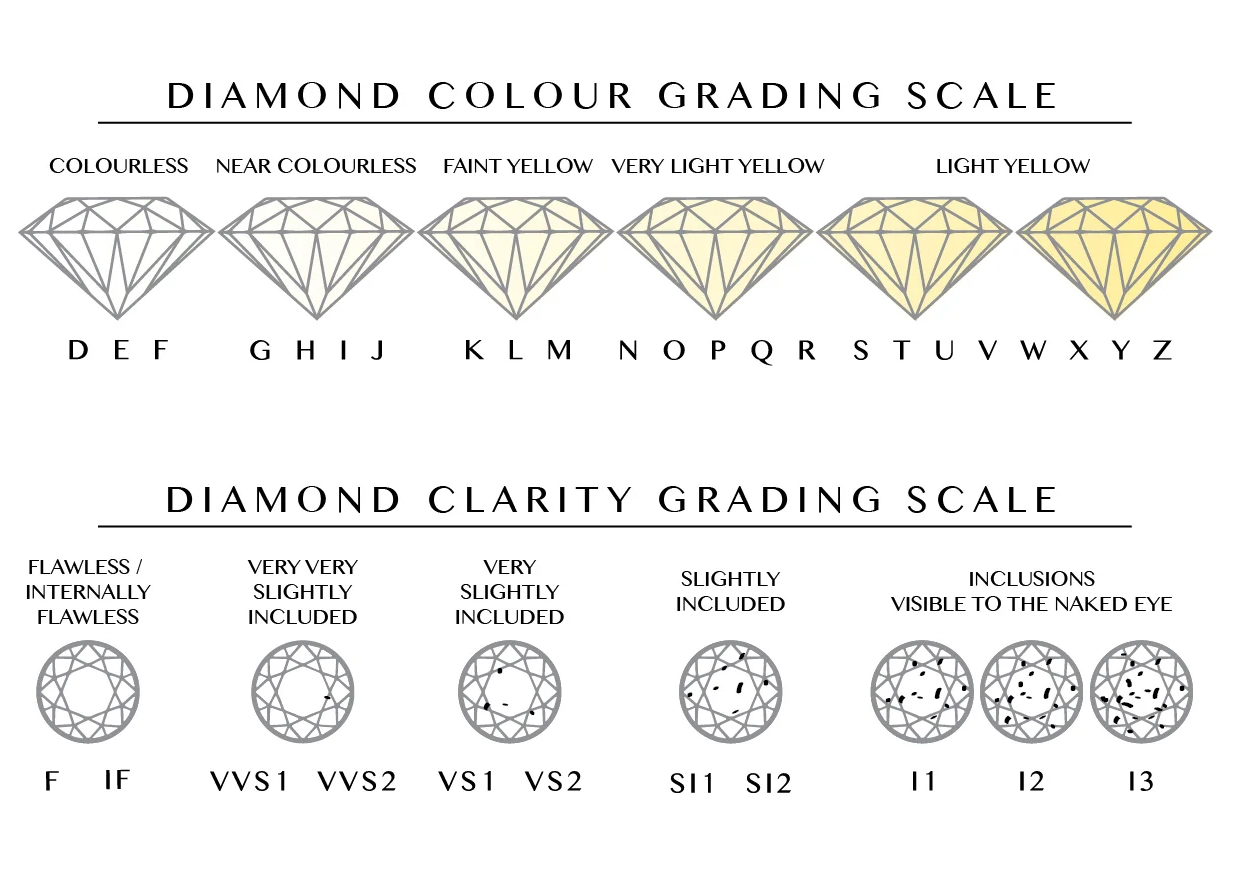
Diamond Certification: A Guarantee of Quality
A diamond certificate is a document providing detailed information about a diamond’s characteristics and quality. It includes data on weight, color, clarity, cut, and sometimes fluorescence. Certificates also detail the cutting style, symmetry, and polish of the diamond.
Certification is issued by independent laboratories specializing in diamond grading. The most well-known certification organizations are GIA (Gemological Institute of America), HRD, and IGI (International Gemological Institute).
The most reliable certificates are issued by renowned organizations like GIA and IGI. GIA certificates are particularly esteemed for their stringent and precise grading standards, making GIA-certified diamonds slightly more expensive due to the detailed evaluation and impeccable reputation.
Certificates are issued for both natural and lab-grown diamonds, always indicating the type.
PS! Not all diamonds come with certificates, particularly smaller stones under 0.3 carats. For smaller diamonds, certification may not be economically feasible or necessary. However, for larger and more valuable stones, a certificate is essential for verifying the diamond’s attributes and providing assurance to both buyers and jewelers.
PS! Some certified diamonds have their certificate number laser-engraved on the girdle. This engraving is invisible to the naked eye but can be identified with a loupe or microscope. It adds an extra layer of security and assurance, ensuring the diamond matches its certification.
Various Diamond Cuts
A diamond’s cut refers not only to its shape but also to how it is polished and faceted to maximize brilliance and beauty.
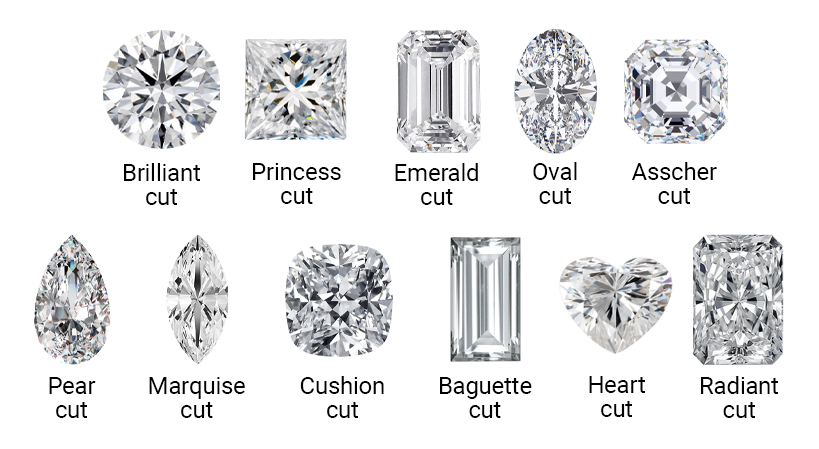
Popular diamond cuts include:
- Round Brilliant Cut: The most popular and sparkling cut with 57 or 58 facets. It highlights the diamond’s brilliance, making it ideal for engagement rings and classic jewellery.
- Princess Cut: A square-shaped, modern cut known for its sparkle and eye-catching appearance. Perfect for contemporary designs.
- Emerald Cut: A rectangular cut with step facets, emphasizing the diamond’s clarity and purity.
- Oval Cut: Offers the brilliance of a round cut but with an elongated shape that visually enlarges the stone, making it ideal for rings.
- Pear Cut: A classic and romantic cut combining elements of oval and round shapes.
- Marquise Cut: An elongated shape with pointed ends, creating the illusion of a larger diamond. It exudes elegance and bold style.
- Asscher Cut: A square-shaped step cut resembling the emerald cut but more compact, giving diamonds a vintage appeal.
- Cushion Cut: A square or rectangular cut with rounded corners resembling a pillow. Its vintage yet modern aesthetic makes it a popular choice for engagement rings.
- Heart-Shaped Cut: A diamond shaped like a heart – a symbol of love and romance. It requires exceptional craftsmanship for symmetry and visual impact.
- Radiant Cut: Combines the angular outline of a square or rectangle with the sparkle of a brilliant cut, making it perfect for modern jewellery designs.
- Baguette Cut: A long, rectangular step-cut diamond characterized by clean lines and geometric simplicity. Often used as accent stones.

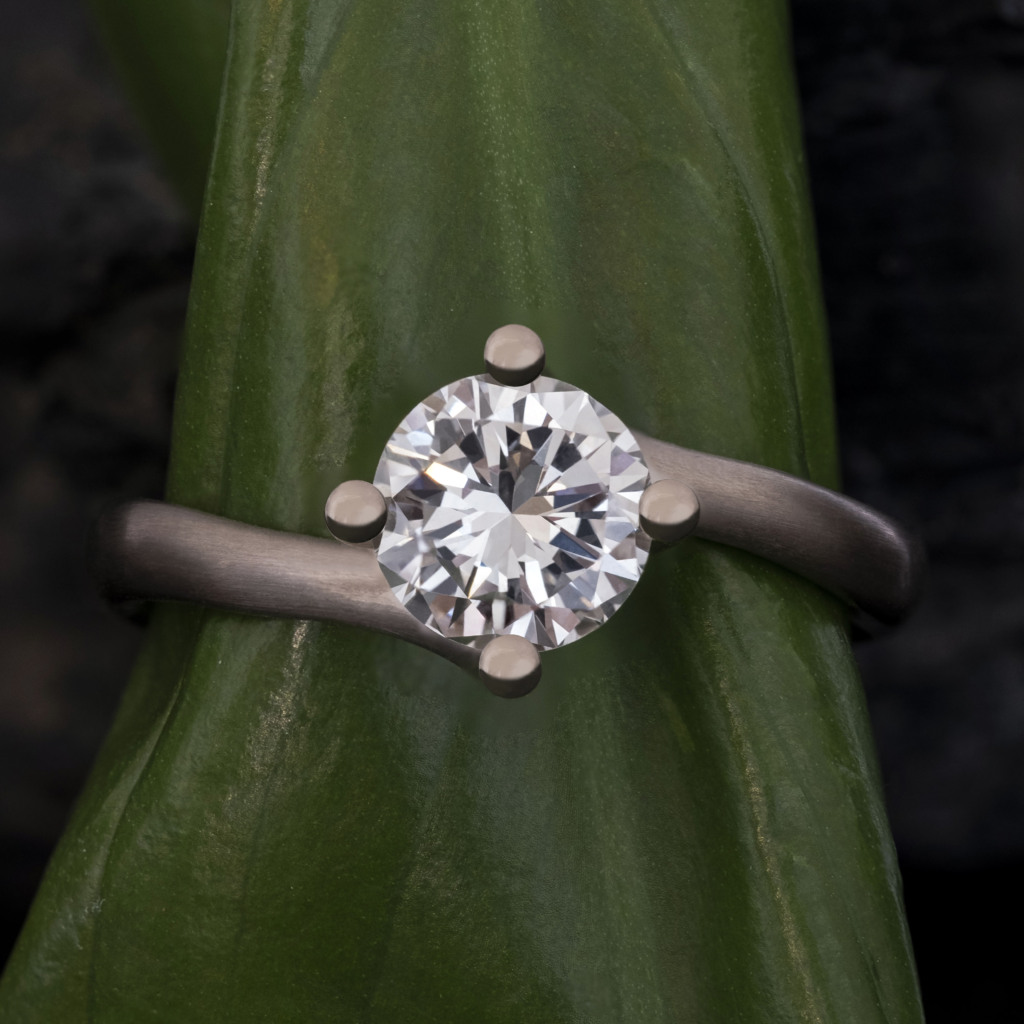
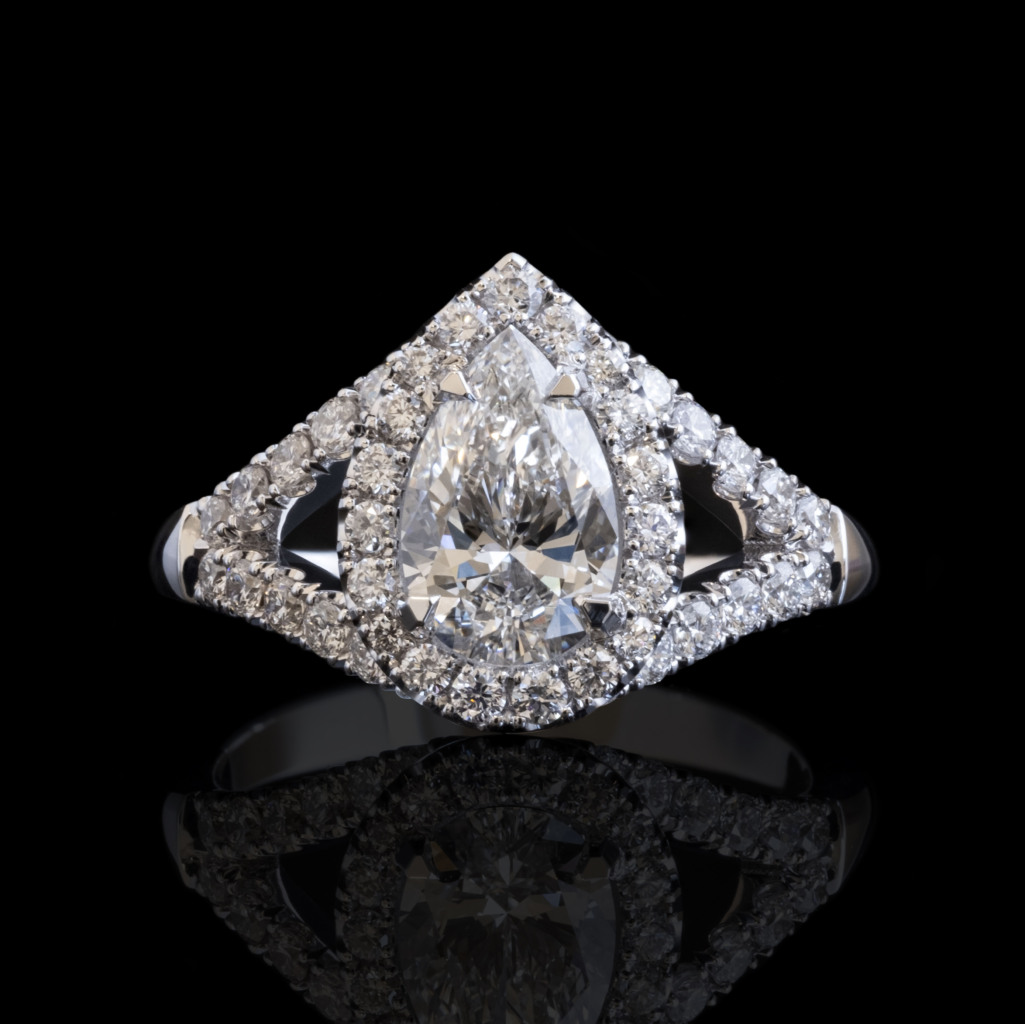
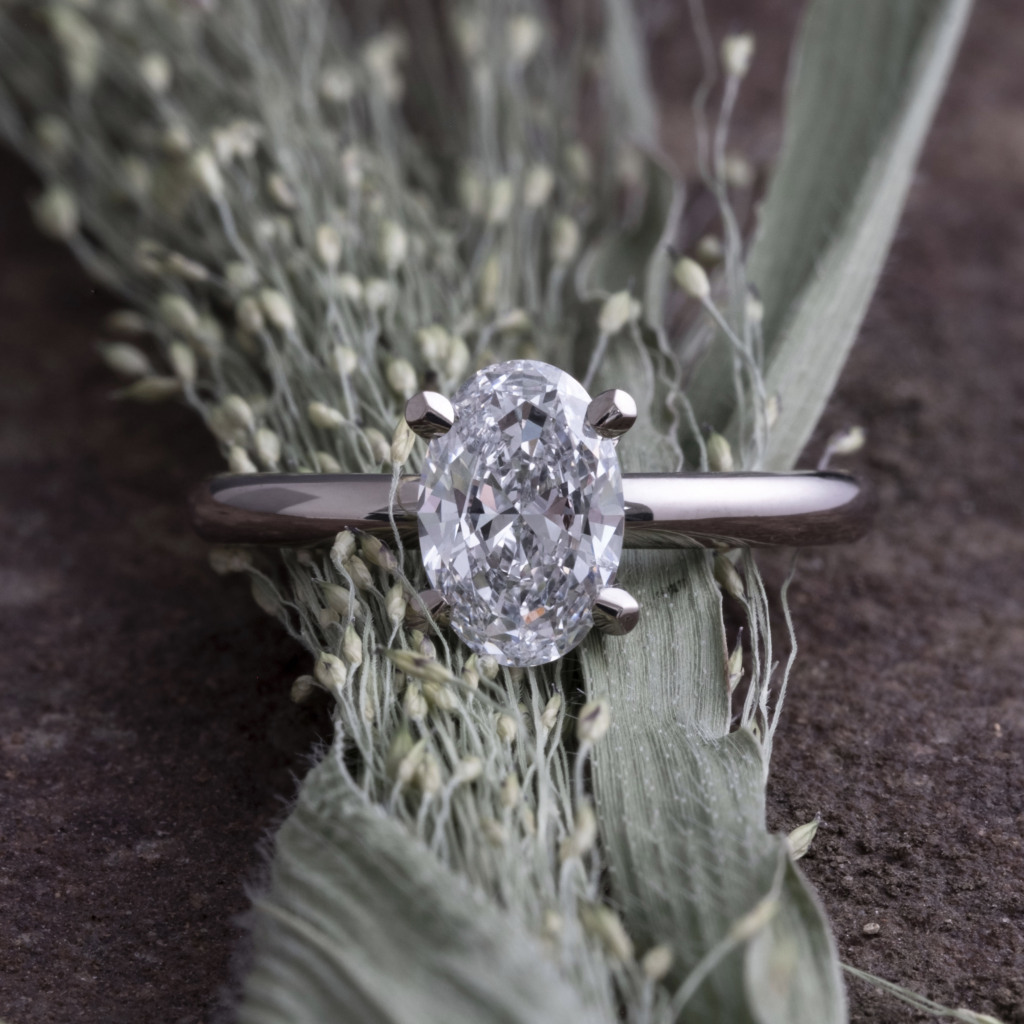
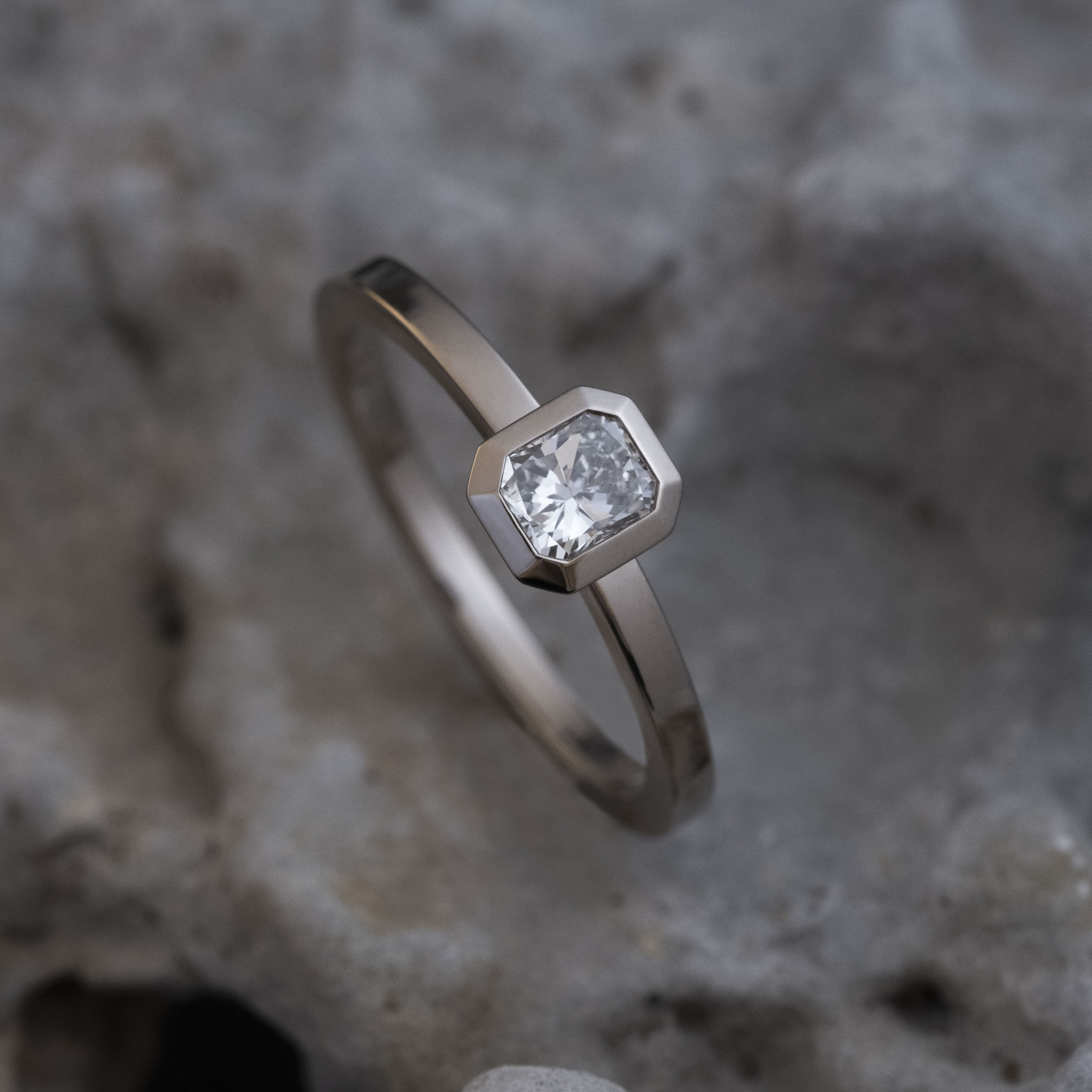
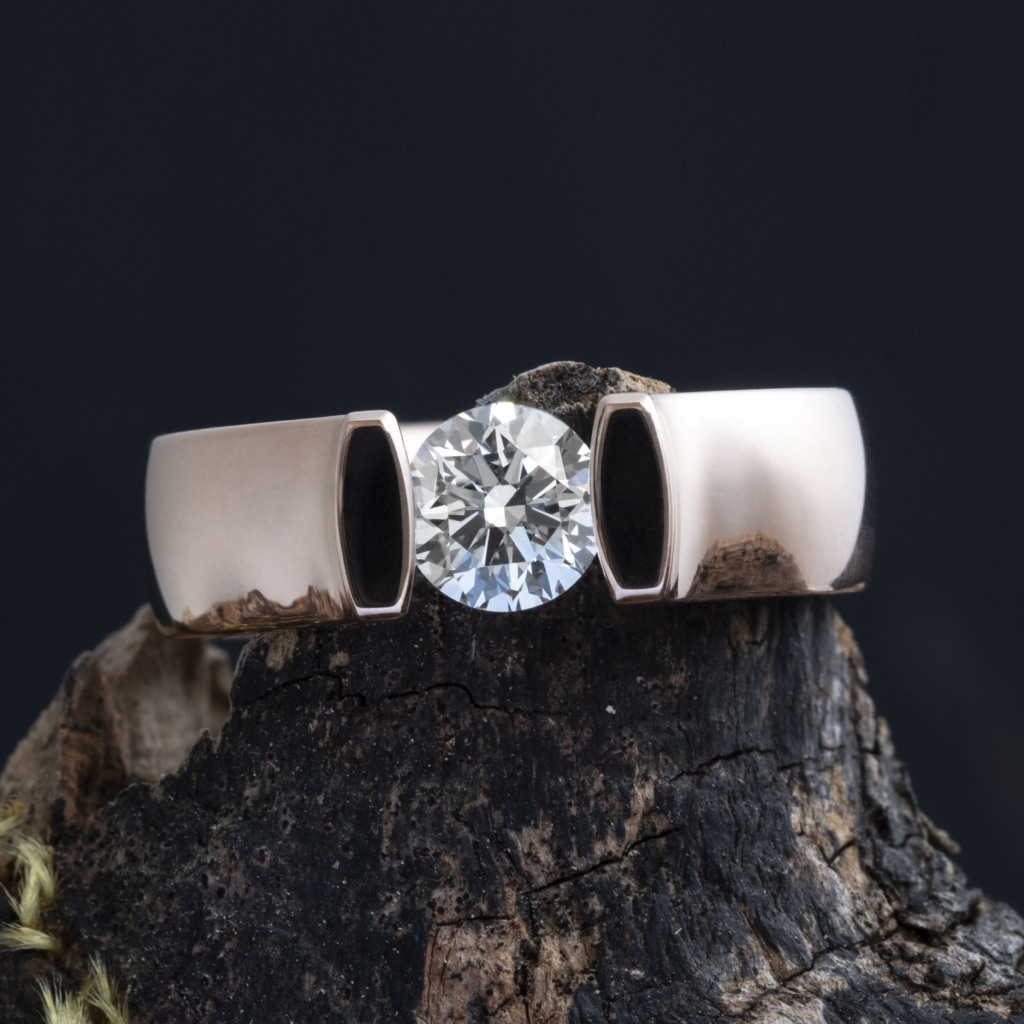
Diamond Colors
Diamonds are not always clear or white – they come in a variety of hues that make them ideal for unique and personalized jewellery. Natural diamonds can occur in shades such as yellow, brown, pink, blue, green, and even rare red. These colors result from various elements (e.g., boron for blue or nitrogen for yellow) or natural radiation during formation.
The rarest and most expensive diamonds are naturally red, blue, and pink. For instance, natural red diamonds are extremely rare and can cost millions per carat. Similarly, blue diamonds like the famous Hope Diamond and delicate pink diamonds are highly prized in exclusive jewelry.
Fancy-colored diamonds with vibrant hues are highly valued for their uniqueness and rich color. These can be naturally formed or enhanced through human processes. Natural fancy-colored diamonds, such as deep yellow, blue, or pink stones, are rare and expensive, while artificially colored diamonds offer a more affordable alternative.
Black diamonds add a bold and dramatic touch to jewelry. They exist in two forms: naturally black diamonds and treated black diamonds. Naturally black diamonds, known as carbonado diamonds, are extremely rare.
At the same time, the market offers many black diamonds that were originally lower-quality diamonds and have been treated with high temperature or radiation to achieve a uniform deep black tone. These man-made black diamonds are more affordable and widely available, making them a popular choice for trendy and modern jewellery designs.
The minimalist elegance and dark tone of black diamonds make them an ideal stone for both men’s and women’s jewellery, offering a completely different aesthetic compared to traditional diamonds.
Additionally, salt & pepper diamonds are becoming increasingly popular in jewellery design, known for their unique internal inclusions and specks. They symbolize the beauty of imperfection and are perfect for one-of-a-kind jewellery. These stones are often more affordable and are ideal for those seeking individuality.
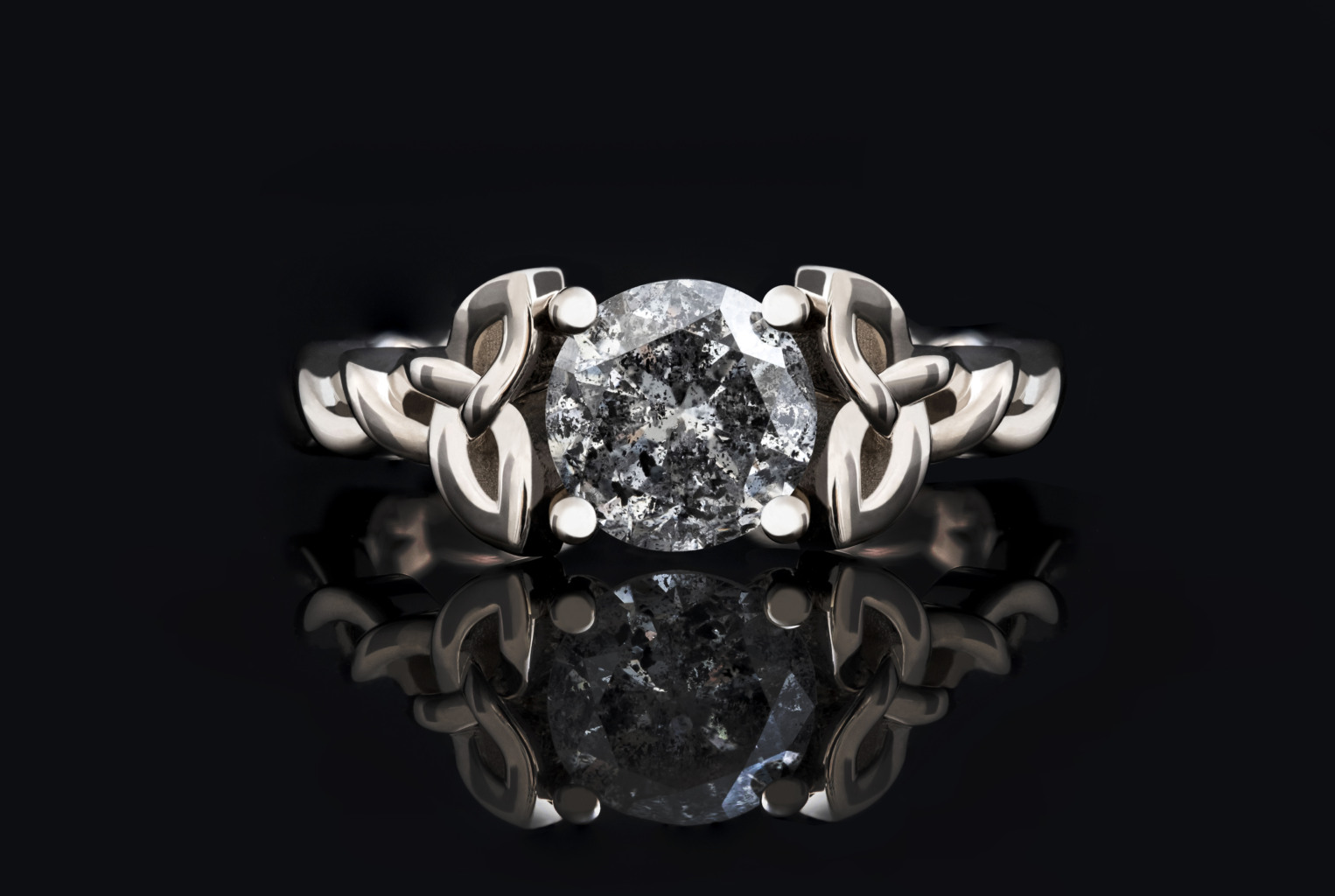
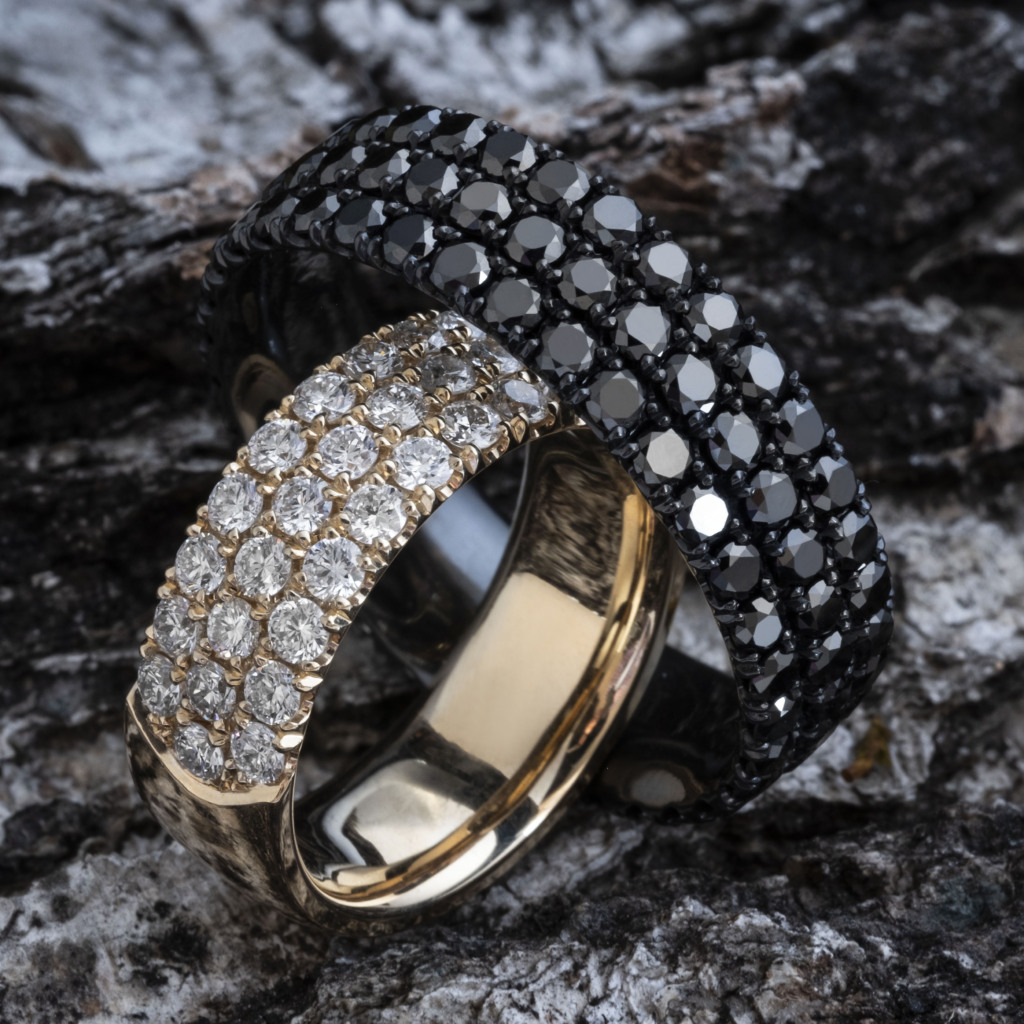

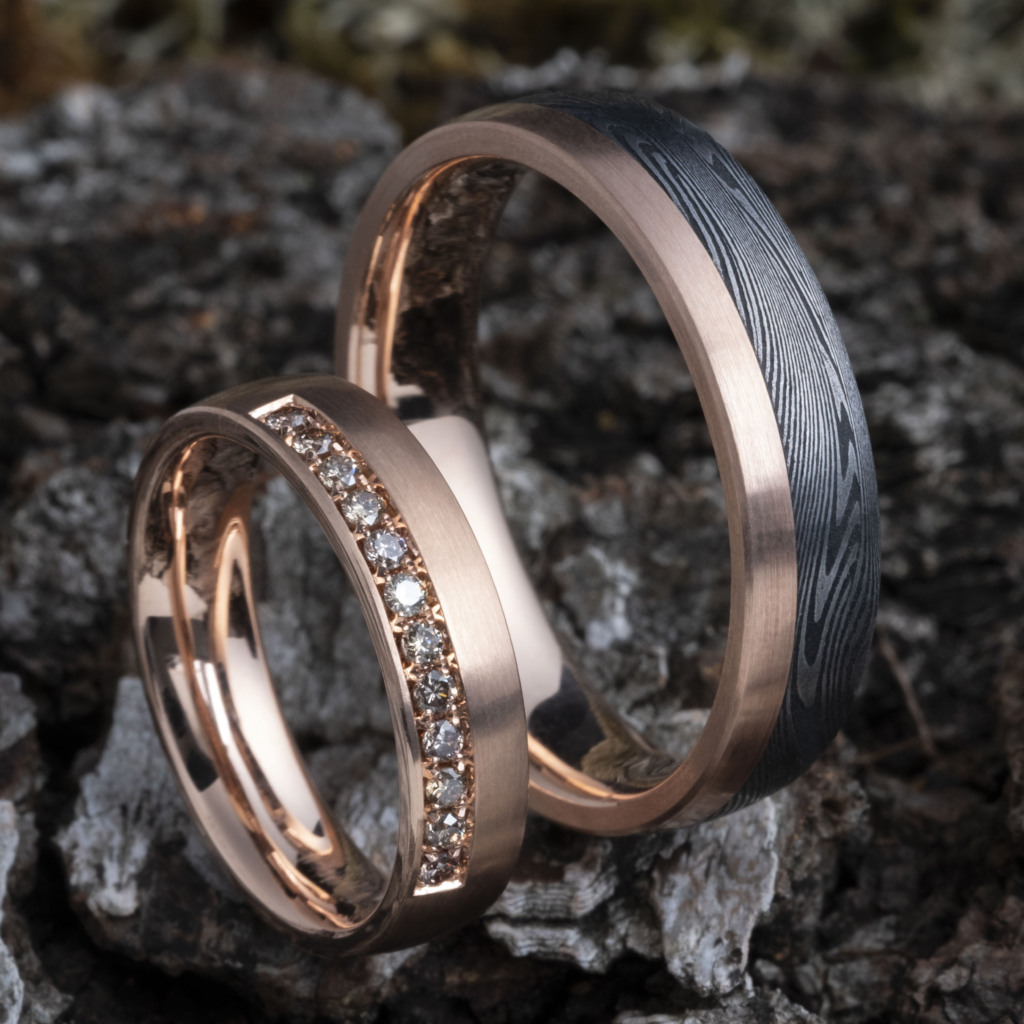
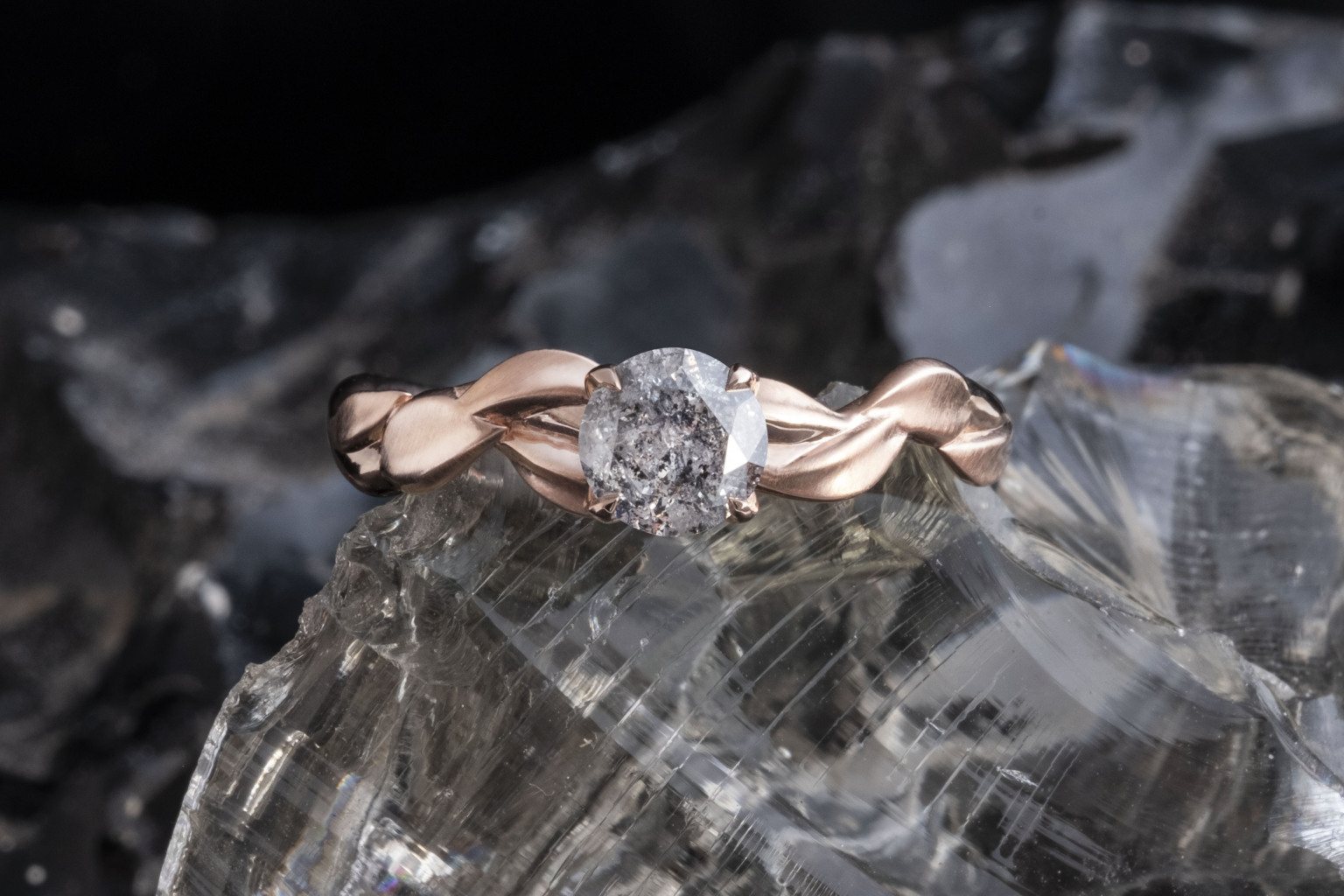
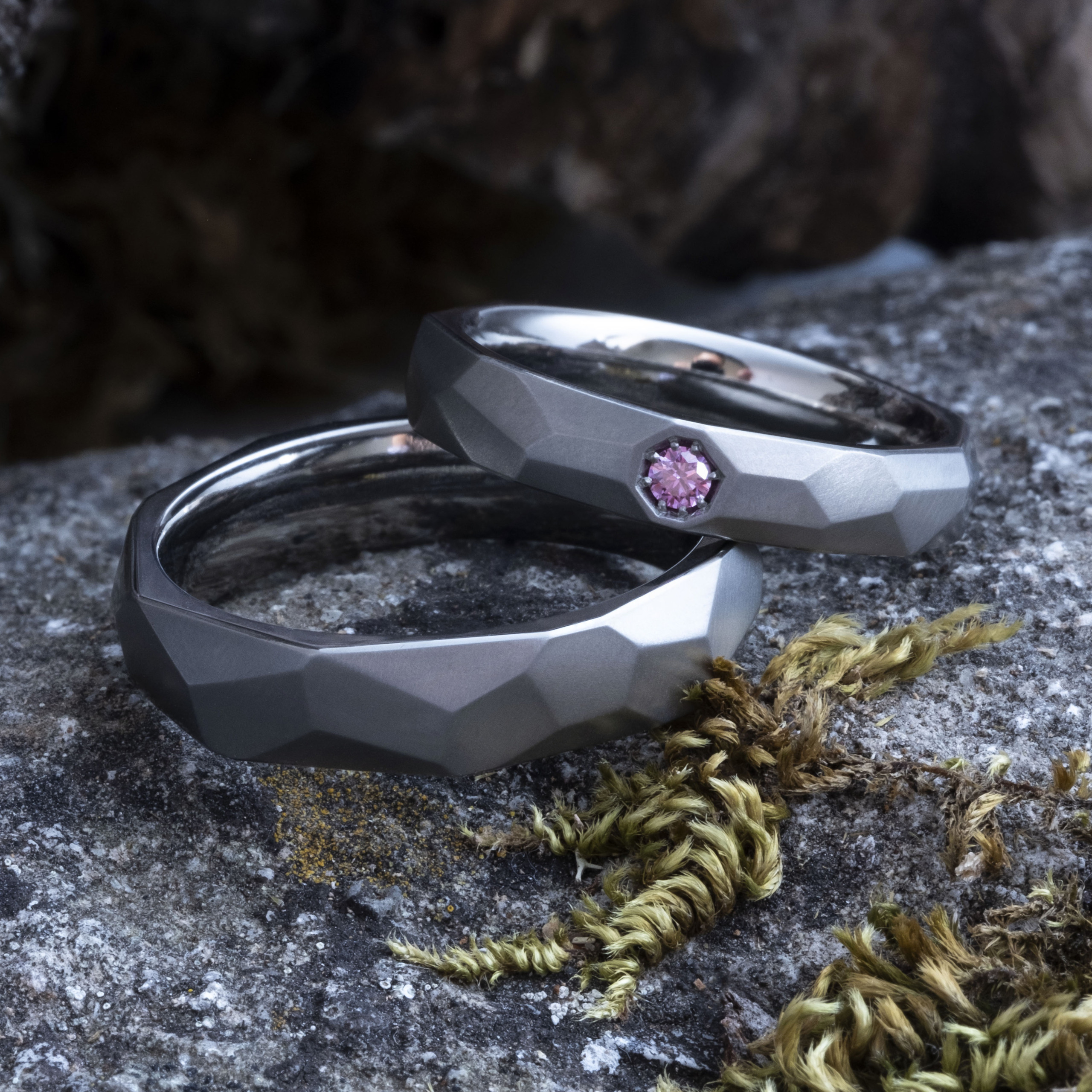
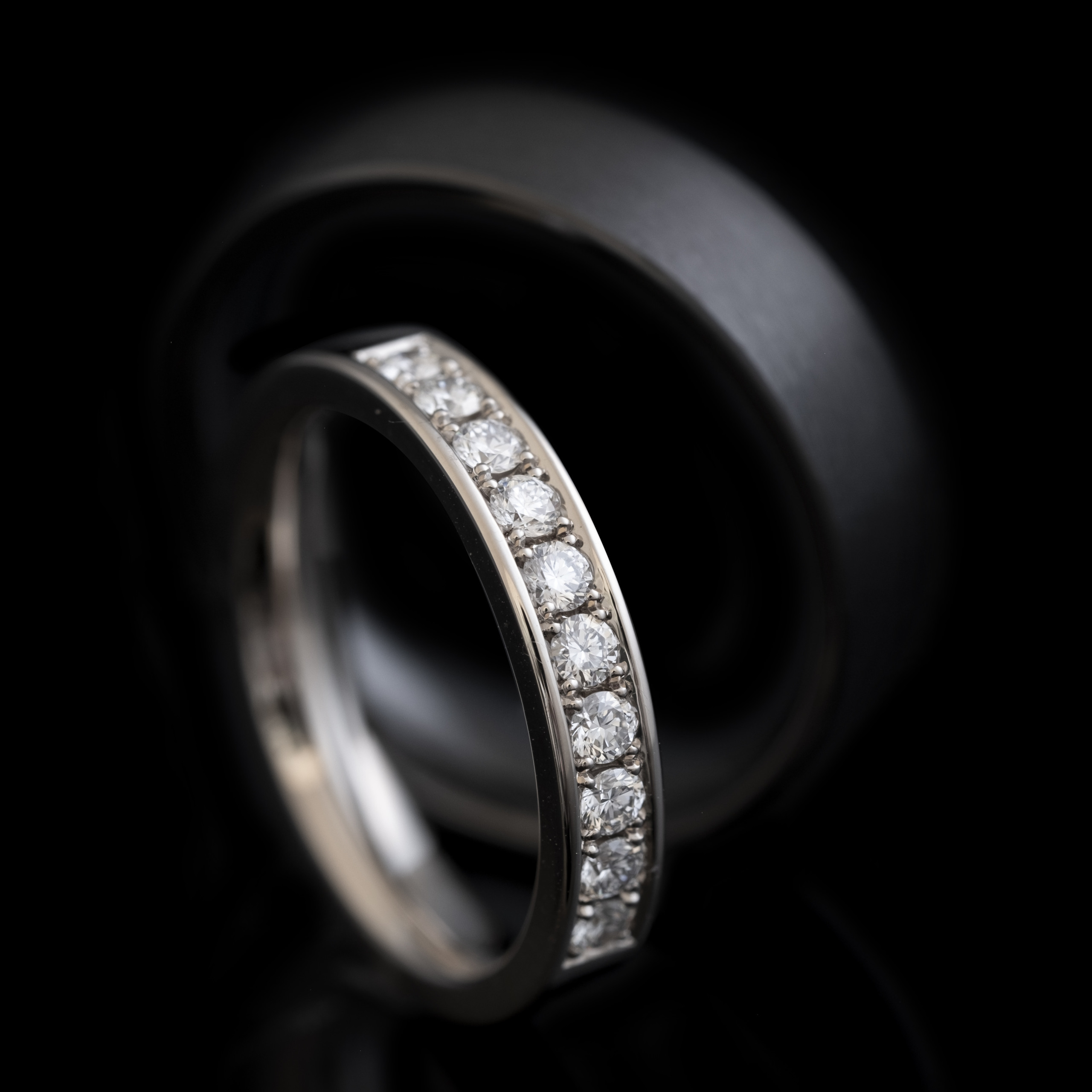

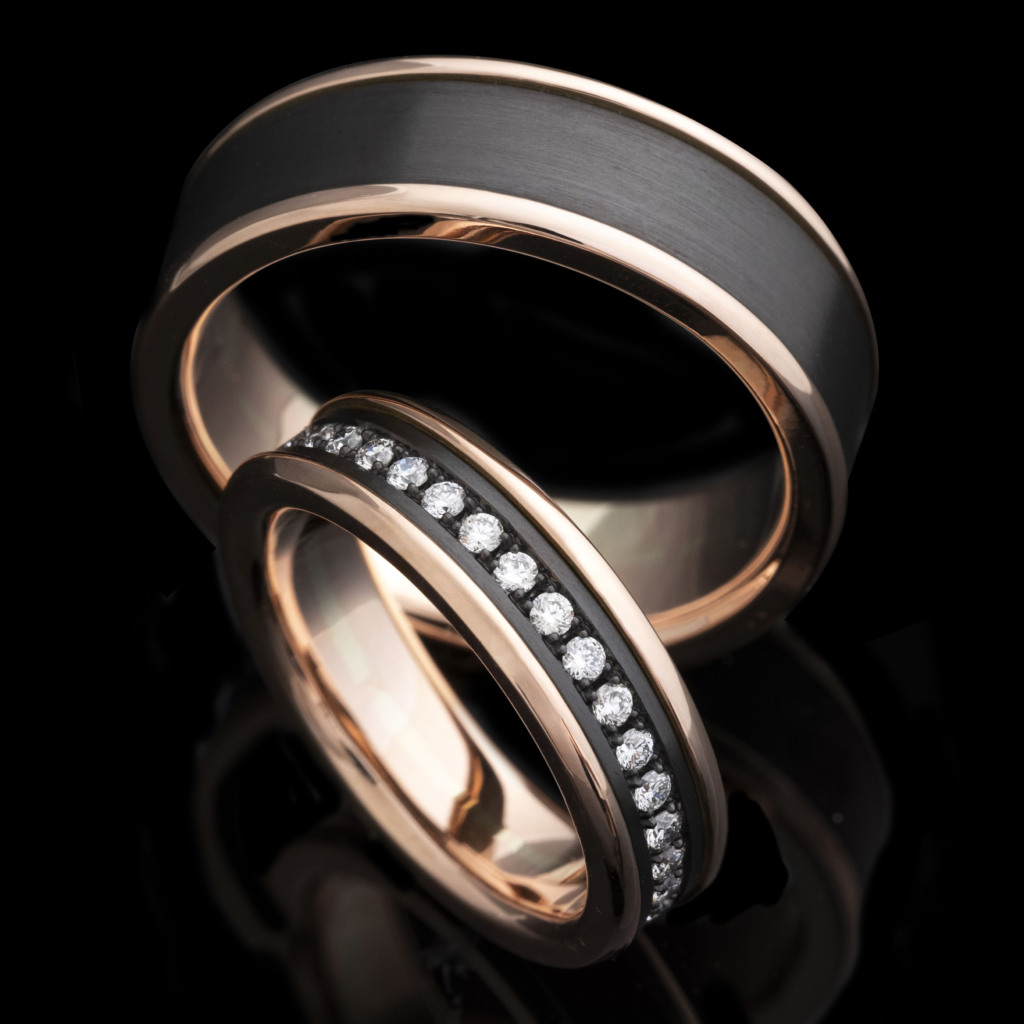
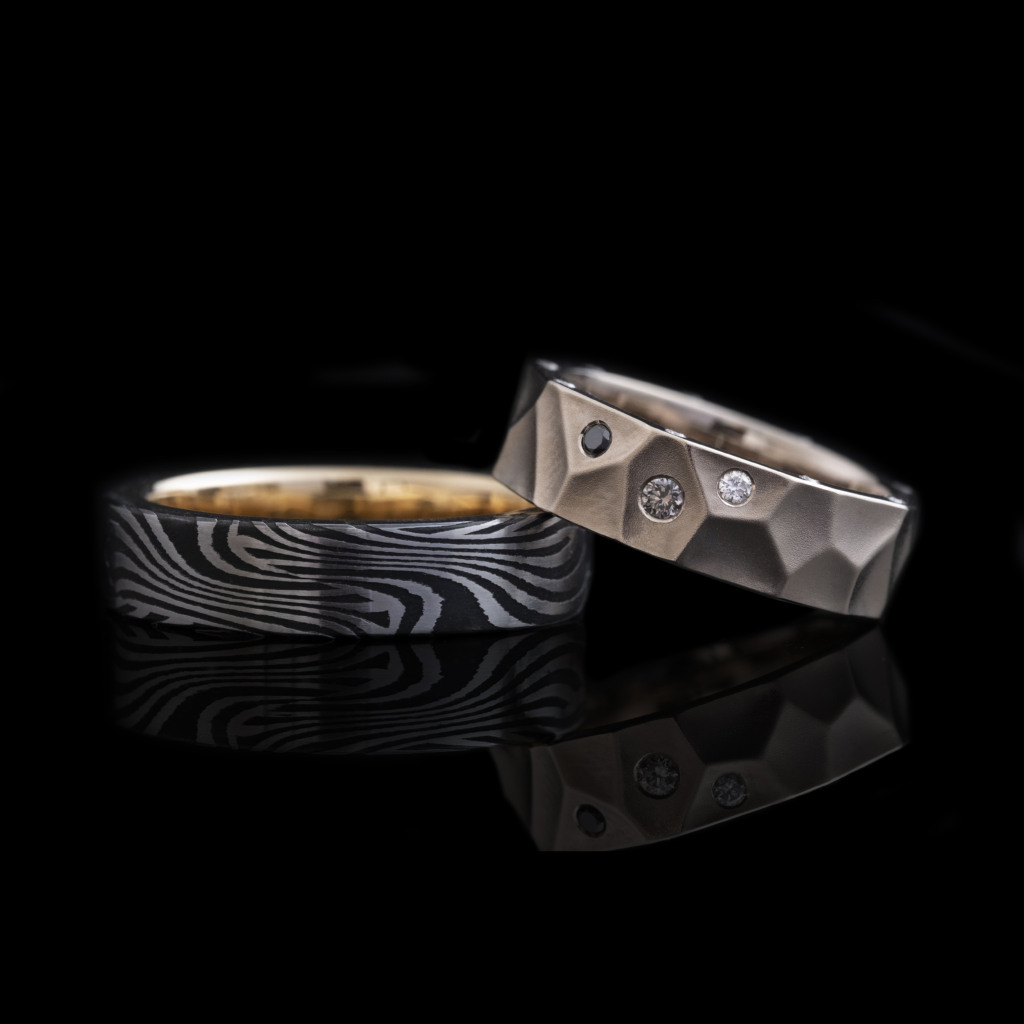
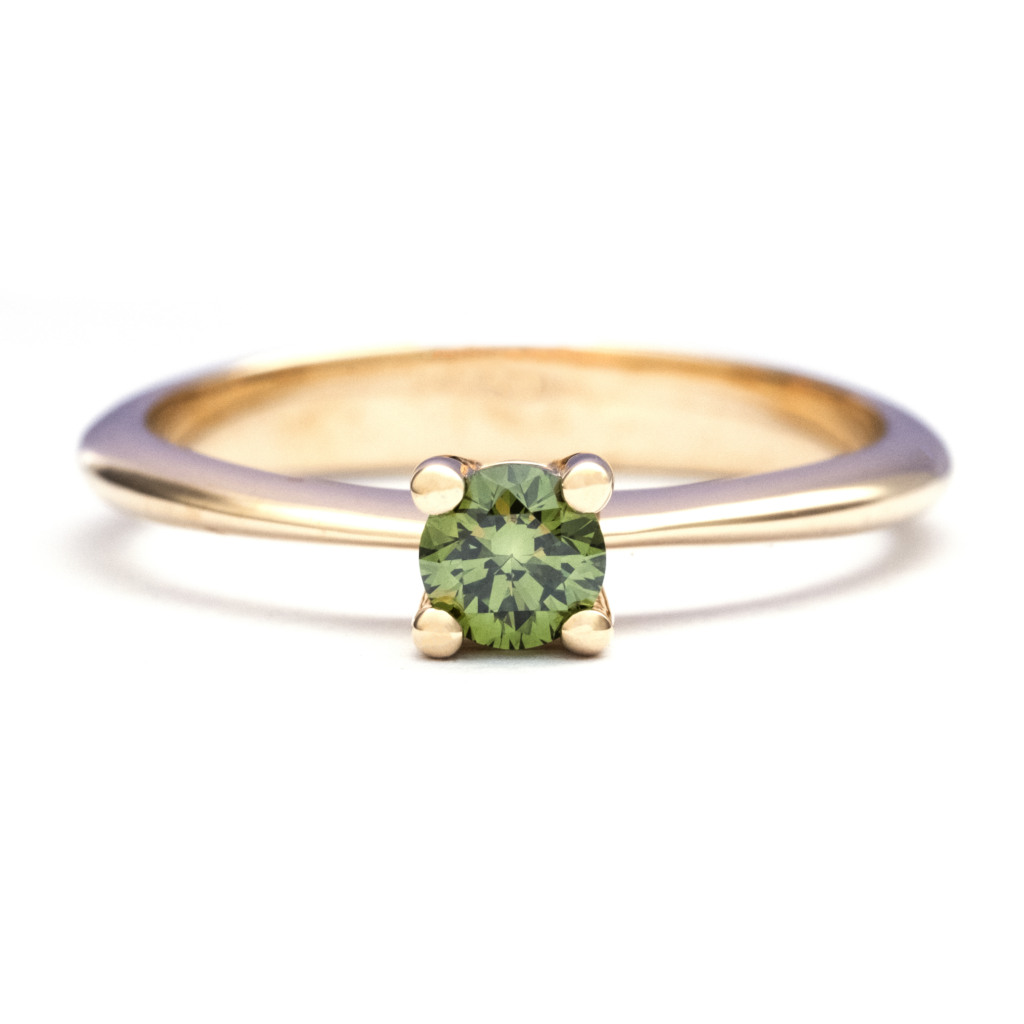
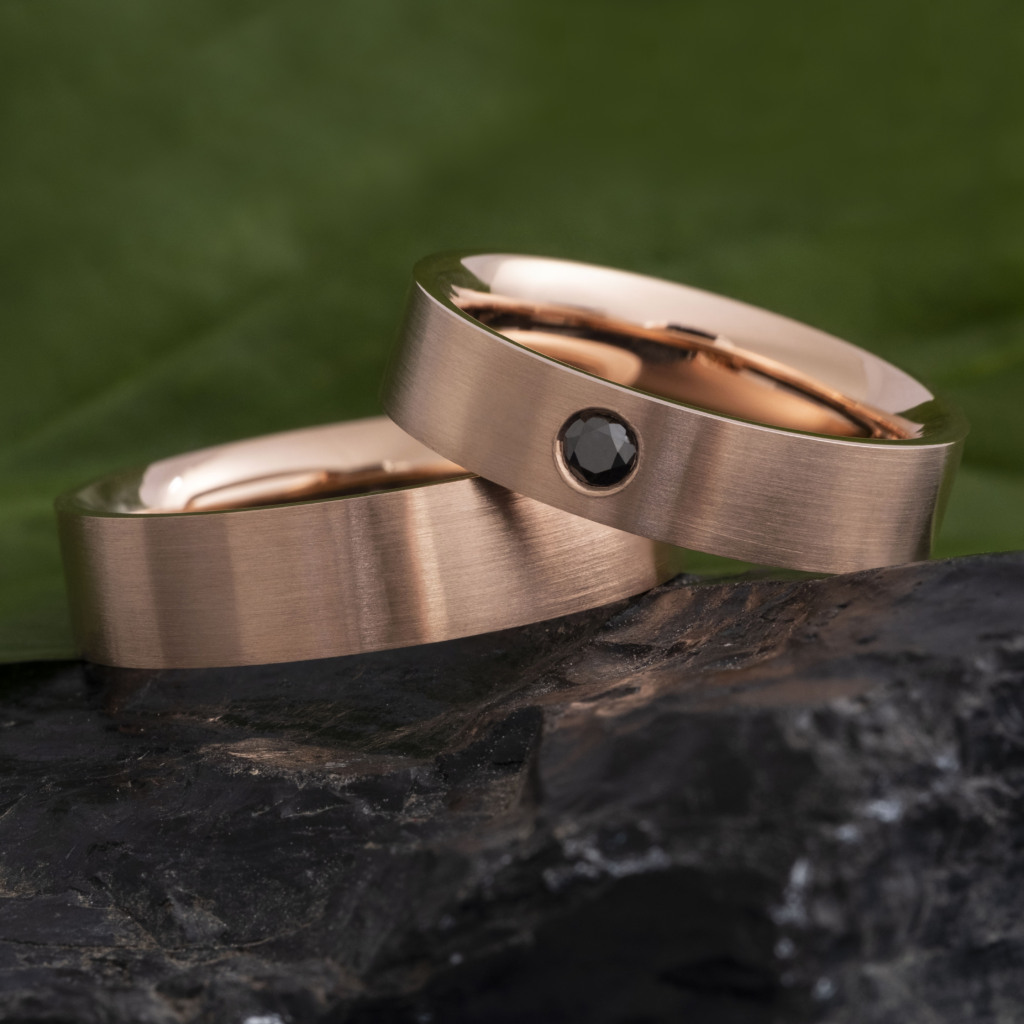
Fluorescence: The Diamond’s Hidden Glow
Fluorescence is a phenomenon where a diamond begins to glow or emit light when exposed to certain UV light. Approximately 25–30% of diamonds exhibit some level of fluorescence, which can range from faint to very strong. Typically, fluorescence appears as a bluish glow, though in rare cases, it can also be green or yellow.
While weak fluorescence does not affect the beauty or durability of a diamond, diamonds with strong fluorescence may appear milky or hazy under certain lighting conditions, such as ultraviolet light. This can impact their visual appeal, and for this reason, at FRONT, we generally avoid using diamonds with fluorescence.
Natural vs. Lab-Grown Diamonds
Natural diamonds and synthetic, or man-made, diamonds are two distinct types of diamonds. Natural diamonds are formed under natural conditions in the Earth’s crust, whereas synthetic diamonds are created in laboratory environments.
The main difference between natural diamonds and man-made diamonds lies in the fact that natural diamonds are a finite resource, formed as part of the Earth’s geology, while man-made diamonds can be produced in unlimited quantities.
Natural Diamonds
Natural diamonds are precious stones that formed millions of years ago deep within the Earth. Each natural diamond is unique and carries a piece of nature’s history. They are highly valued for their rare beauty and luxurious appeal. As a limited natural resource, their price is correspondingly high.
Lab-Grown Diamonds
Lab-grown diamonds are created under perfect conditions by humans. Man-made diamonds have the exact same chemical and physical composition as natural diamonds, making them virtually indistinguishable from their natural counterparts. However, lab-grown diamonds are significantly more affordable, especially for larger stones, as they can be produced in unlimited quantities.
Which to Choose – Natural or Lab-Grown?
The main difference often comes down to a matter of personal preference. Do you value the thought that the stone was formed millions of years ago by the Earth’s incredible natural forces, perhaps lying under the feet of dinosaurs? Or are you more focused on the diamond’s beauty, brilliance, and strength, which are identical in both natural and lab-grown stones?
At FRONT, we feel that if money is not a determining factor, it’s ideal to choose a natural diamond, at least for engagement and wedding rings. Ultimately, however, the decision is entirely personal, and everyone should choose the diamond type that best suits their preferences and needs. At FRONT, we work with both natural and man-made diamonds to offer a range of options.
Additionally, it’s worth noting that for smaller diamonds (approximately up to 4 mm), the price difference between natural and lab-grown stones is not as significant. This is why we generally include lab-grown diamonds as an option for larger stones, where the price difference between natural and man-made becomes much more substantial.
Ethically Mined Diamonds: The Standard of Today’s Market
Many people justify choosing lab-grown diamonds as a way to avoid purchasing “blood diamonds.” However, this reasoning is no longer entirely relevant today.
Yes, “blood diamonds” have historically been a major concern, but this does not mean that all diamond mines are problematic or unethical. Most modern diamond mining operations are not associated with such conflicts.
The term “conflict diamonds” (or blood diamonds) refers to diamonds whose sale funds armed conflicts or political instability. This issue gained prominence in the 1990s and early 2000s in African countries such as Sierra Leone and Angola.
Today, the vast majority of the diamond trade is regulated through the international Kimberley Process, established in 2003 to ensure that diamonds do not originate from conflict zones. Over 80 countries participate in the Kimberley Process, including all major diamond-mining and exporting nations. More than 99% of diamonds on the current market are officially certified as conflict-free. This means that consumers can feel confident that their diamond purchase is not funding armed conflicts or political instability.
Today, the “blood diamond” issue has largely been resolved, and diamond mines often serve as key employers and drivers of development for local communities, enhancing infrastructure and local economies. For example, Botswana and Canada are known for their ethical and sustainable mining standards, providing jobs and investing in community development. The Kimberley Process plays an important role in ensuring that diamond mining and trade are conducted responsibly.


Final Thoughts
Whether natural or lab-grown, diamonds remain a timeless and meaningful choice. By offering certification and transparency, consumers can make informed decisions based on their preferences and values, whether they choose a stone formed by nature or created in a lab. Both options allow for the creation of stunning and significant jewelry pieces, as diamonds truly are forever.
If you are interested in diamonds and diamond jewelry, feel free to contact us! We are always ready to advise you and help you find the perfect solution to match your needs. At FRONT, we offer both natural and lab-grown diamonds and work with you to create something truly special.
Mariliis and Miikael Danieljants
+372 53542921 / +372 56643595
front@front.ee
Instagram: @front.ee
Facebook: @front.ee
You can find our engagement rings HERE.
And our wedding rings HERE.
